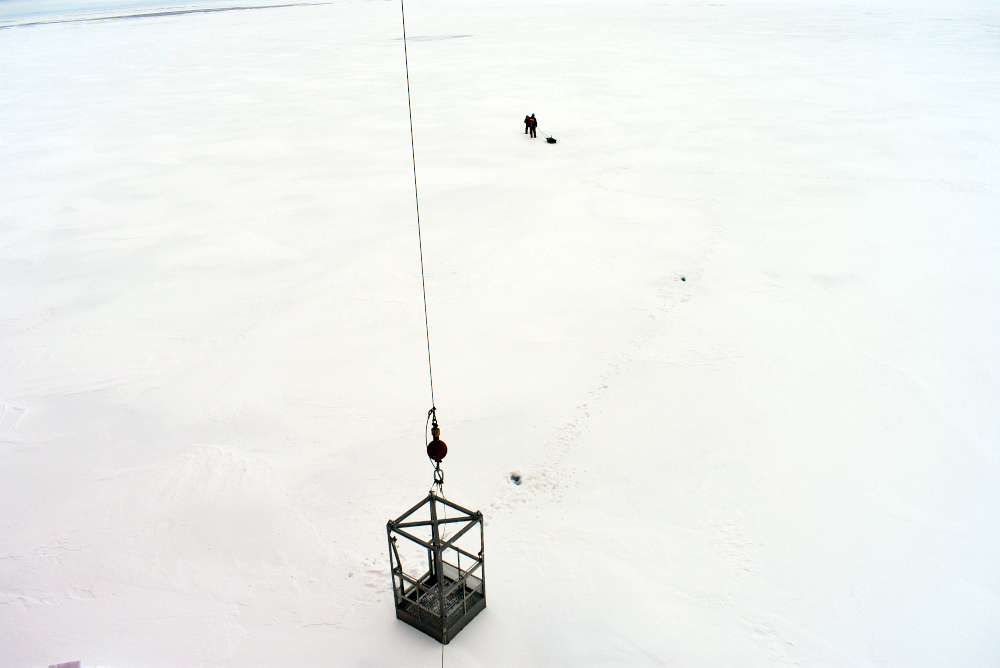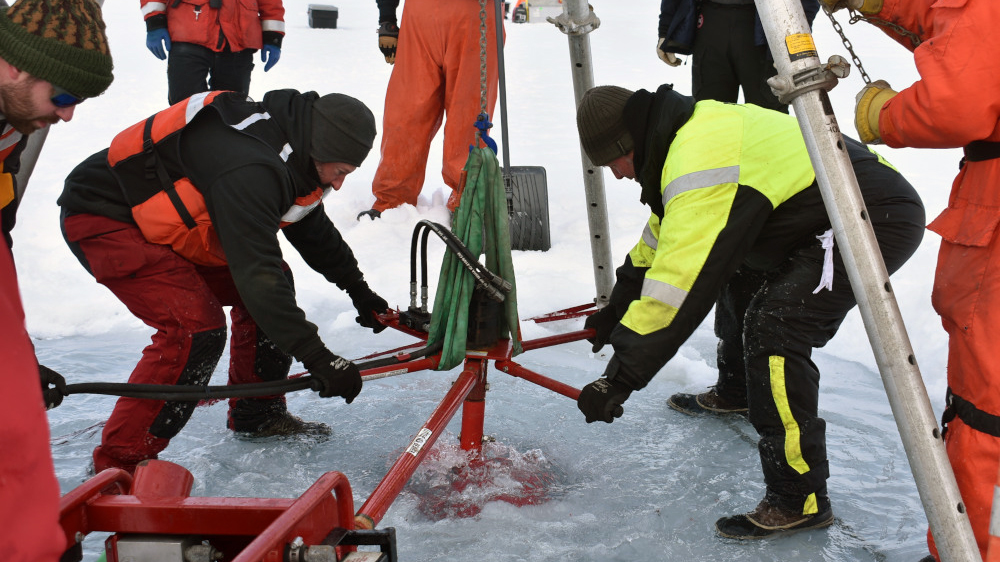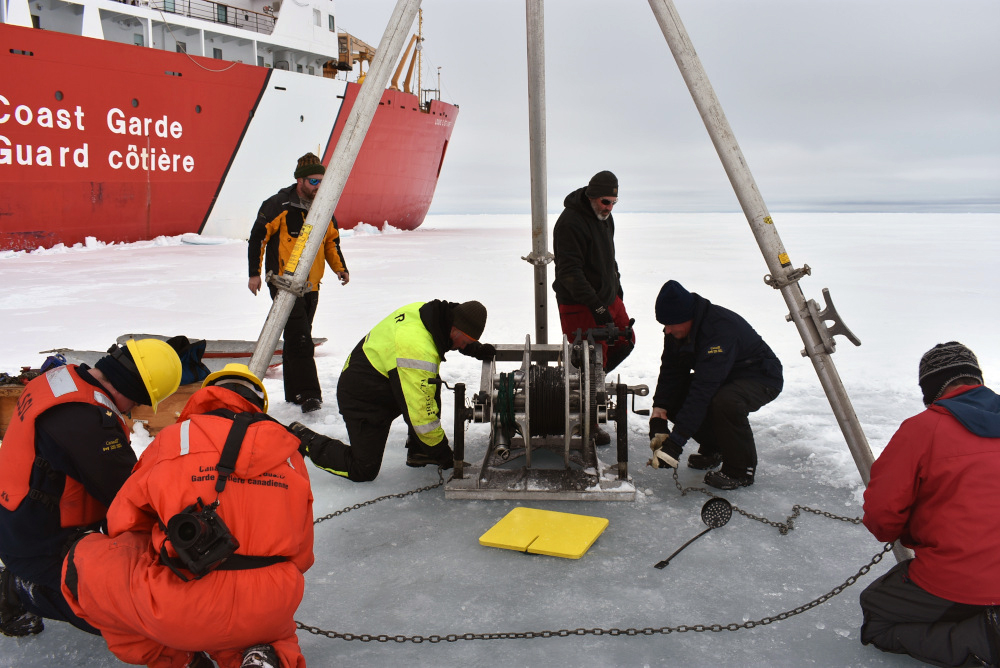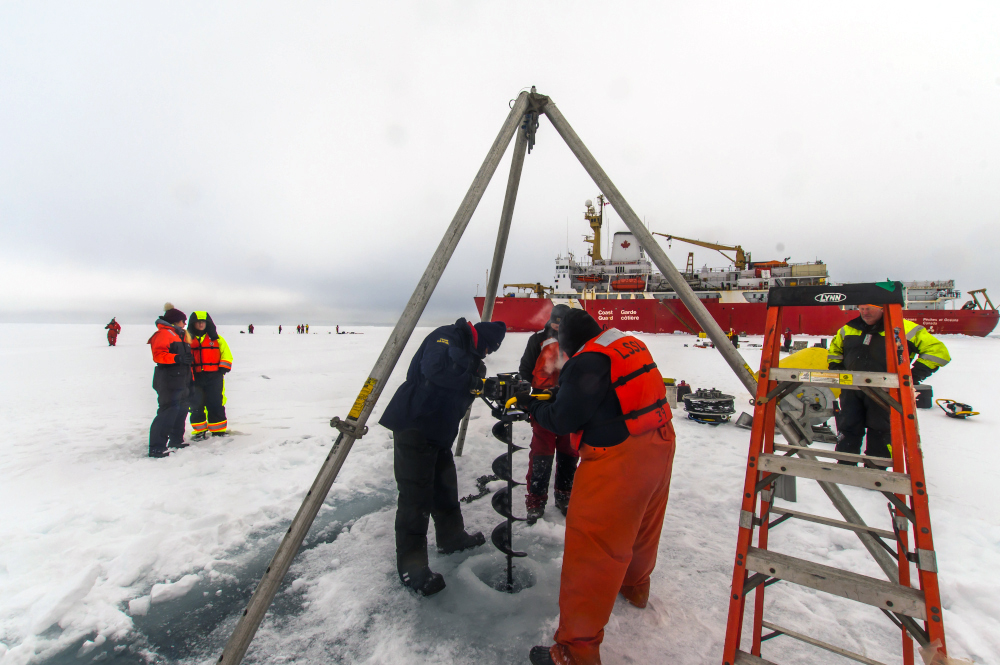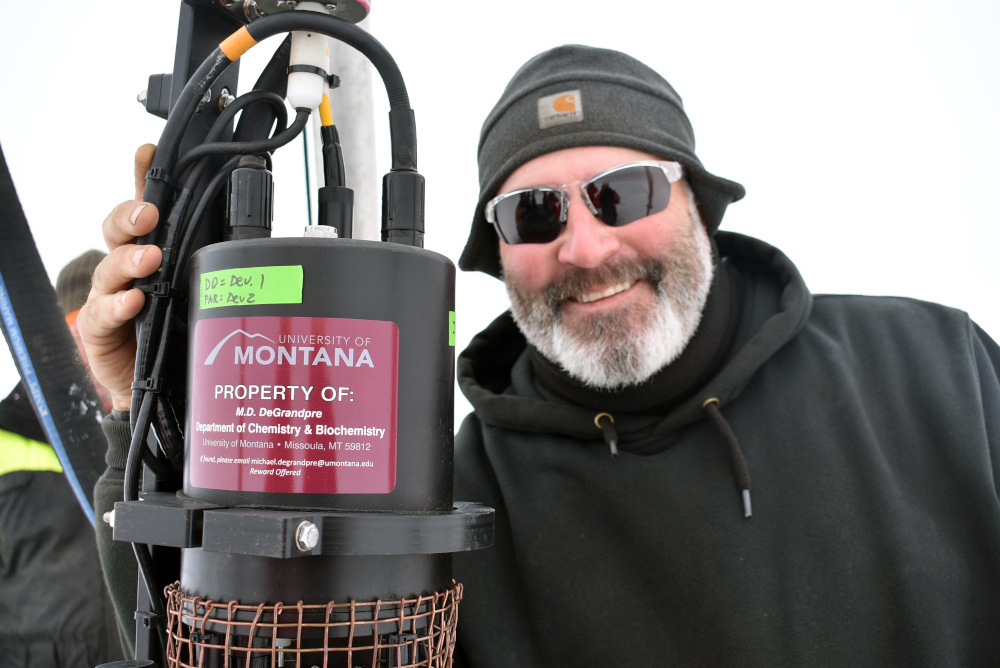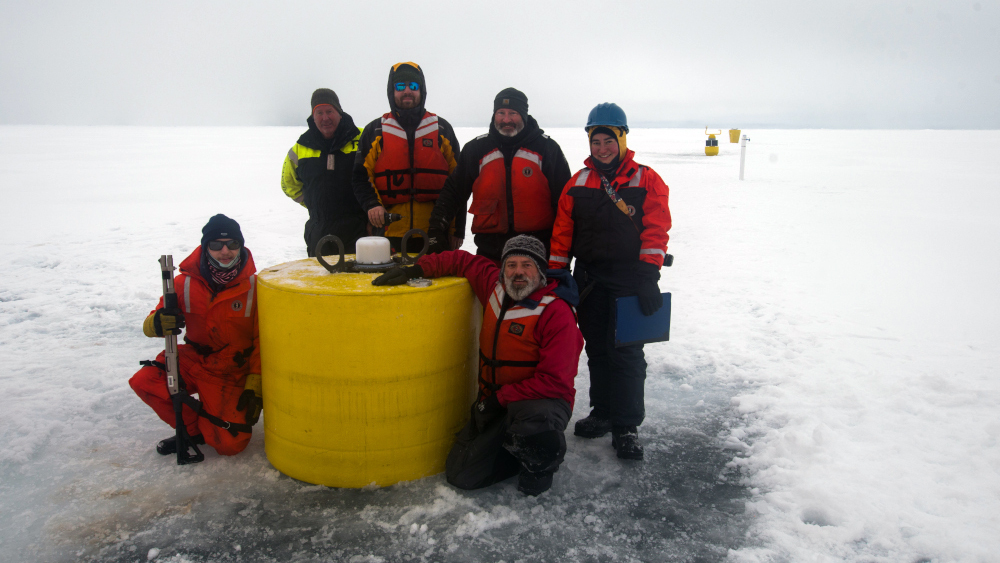Dispatch 14: The Final Ice Stations
Isabela Le Bras
September 4, 2021
On September 3rd, we aimed for a vast sea ice floe about eight nautical miles in diameter. We intended to deploy four buoys on this promising floe, dubbed “blueberry pancake,” which seemed likely to be relatively thick as it kept its size through most of the melt season. Unfortunately, it turned out to be thin and slushy. We transited through the floe twice looking for thicker areas but were unsuccessful. We set our course due 15 minutes north of the next CTD station at 78N,140W, hoping to find something suitable before lunch time.
At 12:28:30, just when we had given up hope of doing an ice station that day and the CTD rosette was at the ready, I announced, “well, we have one minute and thirty seconds to find a spot.” That’s when the Louis slowed and Francis, Jeff, and I looked out the window to examine the thickness of overturned pieces of ice. It looked worth a try.
Jeff and Corey spent about an hour on the sea ice following a winding path, looking for a thick patch. The first test sites were between 60 and70cm thick, just shy of our one meter goal. Jeff radioed to the bridge that we should likely scrap this site, but in a last attempt found a 95cm area and marked it with a flag. On the bridge, second mate Dan responded, “I am very pleased to hear that,” (a competition to find the best ice had developed on the bridge). Because of our late start, we decided to keep this ice station small and only deploy an ITP and TOP. This was just as well since the snow turned out to be slushy and dragging equipment was tough. After the ice station and CTD cast, we headed northeast at full tilt to find a thick and solid floe for a full four-buoy ice station the next morning.
On September 4th, we headed towards immobile ice at the eastern edge of the gyre. It seemed that we hadn’t made it to the pack-ice, but we had to settle on a specific floe after breakfast in the interest of time. This time it was third mate Alex’s chance to find some good ice.
The first few floes were too thin, but by 9 a.m. we pulled into a floe with potential. As we made our way in, the floe began to crack behind us, but Alex was able to park the Louis for an ice survey. Jeff and Cory measured a promising 80cm near the Louis, but the second hole was only 55cm thick and there was scattered rubble and an open rift not too far away. They came back aboard and the Louis pulled forward slowly, turning away from the rift and into a flatter section of the floe.
At the second site, ice thickness increased with distance from the Louis, from 75cm to 100cm – this would be our final ice station! It was the toughest station yet with the unfamiliar AOFB to deploy, but with the help of the Louis’ crew, we were even done in time for steak night.
